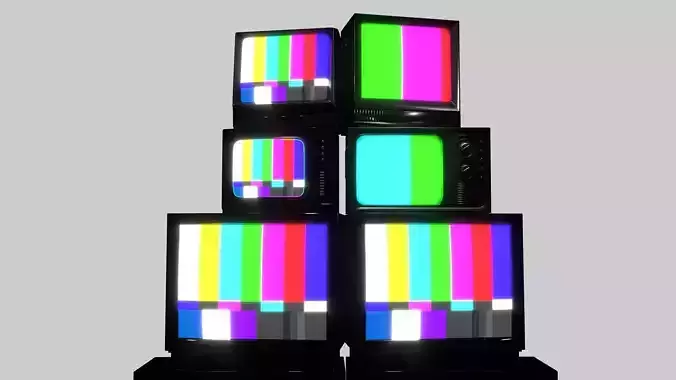1/7
Stack CompositionArrangement: TVs are stacked unevenly—some tilted, others wedged sideways—creating a sculptural, almost junkyard aesthetic.Height: Typically 5–8 units tall, with a wide base tapering slightly toward the top.Support: A cracked concrete slab or rusted metal frame anchors the bottom, hinting at urban decay.
TV Styles & ErasEach television is modeled with distinct retro features:1950s–60s: Bulky wood-paneled boxes with rounded screens, chrome dials, and rabbit-ear antennas.1970s: Console-style units with faux wood textures, built-in speakers, and analog channel knobs.1980s: Plastic CRTs in bold colors (red, teal, mustard), featuring chunky buttons and VHS slots.1990s: Compact tube TVs with curved glass, AV ports, and sticker residue from old rentals.
Textures & MaterialsSurfaces: Mix of aged wood, brushed aluminum, faded plastic, and dusty glass.Details: Scratches, rust patches, peeling decals, and tangled cords spilling from the backs.Screen Effects: Some screens show static, color bars, or distorted video loops using emissive textures.
Lighting & MoodAmbient Lighting: Dim, moody setup with soft shadows and screen glows casting eerie reflections.Scene Ideas: Could be placed in a graffiti-covered alley, a surreal gallery, or a post-apocalyptic bunker.
SymbolismCultural Commentary: Represents media overload, forgotten tech, or layered memories.Artistic Vibe: Feels like a shrine to analog chaos—perfect for hip-hop visuals, dystopian themes, or retro branding.
REVIEWS & COMMENTS
accuracy, and usability.







